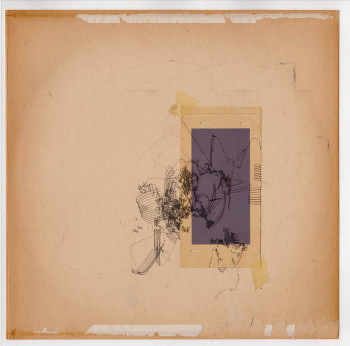grischa lichtenberger
Grischa Lichtenberger (* May 16, 1983, in Bielefeld) is a German artist and musician working in the fields of electronic music, installation, multimedia, and visual art. Since 2009, his musical compositions have been released with the renowned Chemnitz-based label Raster-Noton (since 2017 raster-media). He presented audiovisual live shows at international festivals and concert events (including Mutek Montreal, Electron Festival Geneva, Sou Festival Tbilisi, A l'Arme Festival Berlin). In 2015, he composed the music for the choreography Last Work by Ohad Naharin for the acclaimed dance ensemble of the Israeli Batsheva Dance Company. He composed music for South African choreographer Jessica Nupen (2022) and was featured in dance pieces by American choreographer Kyle Abraham (extensively in the piece Mercurial Son with the American Ballet Theatre, 2024) and in fashion shows (Vertigineux for Valentino by Alessandro Michele, 2025). He collaborated with international musicians, notably with the Canadian electronic musician Jesse Osborne-Lanthier in 2016 (C S L M | Conversations Sur Lettres Mortes) and the Berlin-based jazz saxophonist Philipp Gropper (Re: Phgrp, reworking Consequences by Philipp Gropper's Philm, 2019).
Grischa Lichtenberger’s music exists at the uneasy intersection of abstraction and tactility, a body of work that mutates in real-time, bristling with the erratic energy of a hard drive on the verge of collapse, crowing a memento mori. Since his emergence on Raster-Noton, Lichtenberger has carved a singular path through digital music, rendering technological debris into delicate latticeworks of sound. His approach is, at its core, an exploration of the symbolic structure of music as a physical, yet deeply humane manifestation. Tracks unfold like jagged blueprints, with rhythms that collapse and reassemble in asymmetric grids. His use of fractured, hyper-detailed percussion calls to mind the late-period experiments of Autechre, but where Booth and Brown stretch into alien elasticity, Lichtenberger retains a tensile rigidity, sculpting his sound from a raw immediacy.
Yet beneath the digital brutalism, there’s a sensitivity to decay, to the fragility of memory encoded in corrupted data streams. 2015’s La Demeure trilogy, for instance, offers moments of unexpected tenderness — glitches that seem to breathe, arhythmic patterns that pulse like an exposed nervous system. In his recent work, he has embraced a more painterly touch, allowing for a wider reflection on musical material, classical and pop codifications. Lichtenberger’s work shares affinities with the hauntological sensibility: a sense of the past pressing in through the cracks, an aesthetic of obsolescence that turns malfunction into expression. His use of distortion and erratic sequencing doesn’t just disrupt linearity — it gestures toward forgotten or half-erased sonic histories, echoing the uneasy relationship between memory and technology. Even at its most abstract, his music remains deeply affective, evoking not only the cold mechanics of digital production but also the uncanny feeling that somewhere, beneath the layers of noise and glitch, something is trying to speak.
Growing up on a remote former farmhouse in Steinhagen, Lichtenberger's artistic approach evolved from referencing landscape as a condition and context for art production. However, here landscape is not to be understood as a natural recreational space, but as an interplay between biographical experiences and its material condition. Lichtenberger's work is not attributed to specific disciplines (such as music, visual art, text, theory, etc.), but is structured as an intermedially intertwined whole, thematically divided into larger phases of work. Their titles are less about work directives and more about thematic orientation points, under which incidentally created works can also be retrospectively gathered. They are associated with landscapes and thus with the places where Lichtenberger lives, but like landscapes, they also flow into one another and follow no strict chronology or systematic order: ~treibgut was created in Bielefeld and Düsseldorf, andyrchie IV is an exploration of the city of Berlin, where Lichtenberger has been living since 2008. With la demeure / il y a péril en la demeure, inspired by the philosophy of Emmanuel Levinas, he turns to the theme of the home and its destructive reverse side – in topographic terms: the private and the public space. In the current work cycle ostranenie, Lichtenberger engages with the comprehensive, landscape-like presence of the internet, developing artistic counterstrategies against an insistent allure towards passive media consumption.
bands
releases





